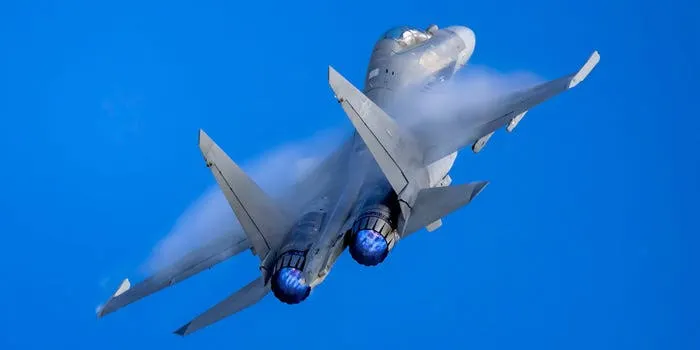Chinese state media frequently boasts about the rapid advancements in the country’s aircraft industry. However, true global powers do not resort to stealing designs or unauthorized copying, disregarding intellectual property rights and the norms established by a fair and responsible international community.
Most PLAAF aircraft are foreign-made or reverse-engineered copies, highlighting a strategic weakness. China bypassed costly R&D with Soviet aid during the Korean War, producing MiG-15s, J-5s, and J-6s. The 1960s saw setbacks but recovery began with the J-8.
In the 1950s and early 1960s, the Soviet Union shared weapons technology with China, including the MiG-21. The Sino-Soviet split halted cooperation, but in 1962, Khrushchev offered to transfer MiG-21 technology. China reverse-engineered the aircraft, solving 249 issues and reproducing missing documents. The F-7, a MiG-21 variant, saw about 2,400 units produced, some as recently as 2013.
China’s development of an all-weather interceptor began in 1964, leading to the J-8 jet fighter to counter high-altitude threats like the U-2 spy plane. Despite its 1960s origins, the J-8 entered service in 1980. It featured two Wopen-7A turbojet engines and was derived from the MiG-21 design.
In the 1980s, the U.S. and Israel collaborated on developing a new combat aircraft based on the F-16. However, rising costs led the U.S. to withdraw, leaving Israel’s ‘Lavi’ fighter unfinished. Israel then sold the Lavi’s plans to China, granting access to F-16 technologies. The Chengdu J-10, or ‘Vigorous Dragon,’ emerged, sharing a visual resemblance with the F-16.
Authorized by Deng Xiaoping, the J-10 program began in 1988. Despite initial setbacks, the J-10 was unveiled in 2007, with over 700 built to date. The J-10C, an upgraded version, features advanced radar and missiles, with Pakistan as its primary foreign customer.
In the 1970s, Shenyang proposed a light fighter with a Rolls-Royce Spey 512 engine, aiming for better manoeuvrability than the MiG-19 and a superior climb rate to the MiG-21. The J-11, a Chinese version of the Su-27, emerged in 1998 after a $2.5 billion deal. Production halted in 2004 after 100 units. The J-11B variant featured Chinese upgrades, including radar, avionics, and weaponry for maritime strike roles.
The J-11 production line halted due to outdated avionics and radar, failing to meet PLAAF requirements. In 2002, Russian media reported China’s intent to replace Russian-made J-11/Su-27SK components with domestic parts, including the NIIP N001 radar, AL-31F engine, and R-77 AAMs. A J-11 was photographed in 2002 with AL-31F and WS-10A engines for testing. By 2007, China confirmed the J-11B with domestic components, including the WS-10A turbofan engine.
Russian media reports indicate China plans to upgrade the J-11 fleet’s engines with Saturn-Lyulka or Salyut power plants. The WS-10 integration faced challenges, leading to poor reliability and grounding of Taihang-powered J-11Bs. A Washington Times report noted Chinese engines lasted 30 hours before servicing, compared to 400 hours for Russian versions. By 2009, WS-10A issues were resolved.
Despite extensive information since 2007, the J-11/J-11B’s legitimacy remains unproven. At the 2009 Farnborough air show, Alexander Formin stated Russia hadn’t questioned China about ‘copying’ military equipment. Russia granted China licenses for aircraft and components, but details of intellectual property rights remain undisclosed, fuelling speculation about a ‘secret’ contract.
In 2010, Rosoboron export raised concerns about China’s unlicensed weapon production. Talks began, focusing on future sales of advanced Russian systems. The Su-27’s advanced avionics and fly-by-wire tech influenced China’s J-16 and Su-35S acquisitions.
The Shenyang J-15, or ‘Flying Shark,’ is a 4th generation, twin-jet, carrier-based fighter of the PLAN. Developed from the J-11B and reverse-engineered from an unfinished Su-33 prototype acquired from Ukraine in 2001, it features Chinese technologies and avionics.
The J-15 serves as an interim carrier-based fighter.
When the Soviets withheld Su-33 design secrets, China reverse-engineered it with Ukraine’s help. The J-15, featuring folding wings and composite materials, first flew on August 31, 2009, and entered PLAN service in 2013. The J-15D variant, with EW pods, has been tested since 2018 but is limited by China’s carrier launch system.
China’s J-7, based on the MiG-21, integrated F-16 design elements from Israel’s ‘Lavi’ program, resulting in the FC-1 (JF-17). This aircraft combines the F-16’s nose and tail with a MiG-21 wing design. The latest JF-17 variant features AESA radar, refuelling capabilities, composite materials, and advanced Chinese AAMs.
The J-20, China’s first fifth-generation fighter, is an air superiority aircraft with precision strike capabilities. It first flew on January 11, 2011, and entered service in March 2017. The J-20 is the world’s third operational fifth-generation stealth fighter, following the F-22 and F-35.
Despite the addition of forward canards, the J-20 and F-22 look similar. However, China’s limited stealth technology results in a larger radar signature for the J-20. The U.S. built 180 F-22s, while China has produced 300 J-20s and continues production.
The Shenyang FC-31, a twin-engine, mid-size Chinese fifth-generation fighter, is under development. A model labelled F-60 appeared online in September 2011, and a fully assembled aircraft was seen in September 2012. The F-60 is for export, while the J-31 is for domestic use. The prototype flew on 31 October 2012, making China the second nation with two stealth fighter designs in testing. The J-31 may have two variants: a carrier-based fighter and a land version for export.
AVIC officials state the FC-31 was designed to compete with the F-35. An improved prototype, featuring enhanced stealth, electronics, and payload, first flew in December 2016. By November 2018, the program received government funding, attracting interest from PLANAF and PLAAF. The J-31, still in development, aims to replace the J-15 as China’s primary carrier-based fighter. Pakistan has shown interest in acquiring the J-35.
China has exploited the Chinese Diaspora, financial incentives, and cyber-attacks to steal aircraft designs. Many Soviet designers moved to China post-1991 collapse, disregarding intellectual property rights, with aircraft design theft being the worst offense.

